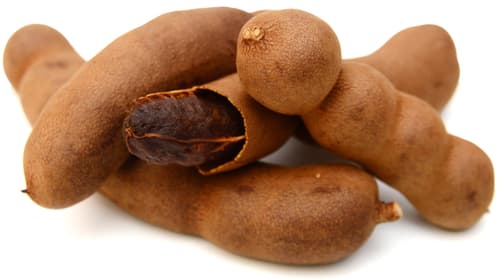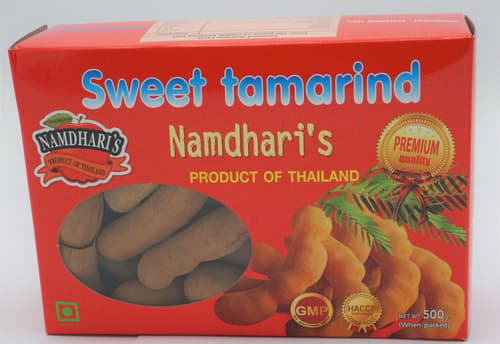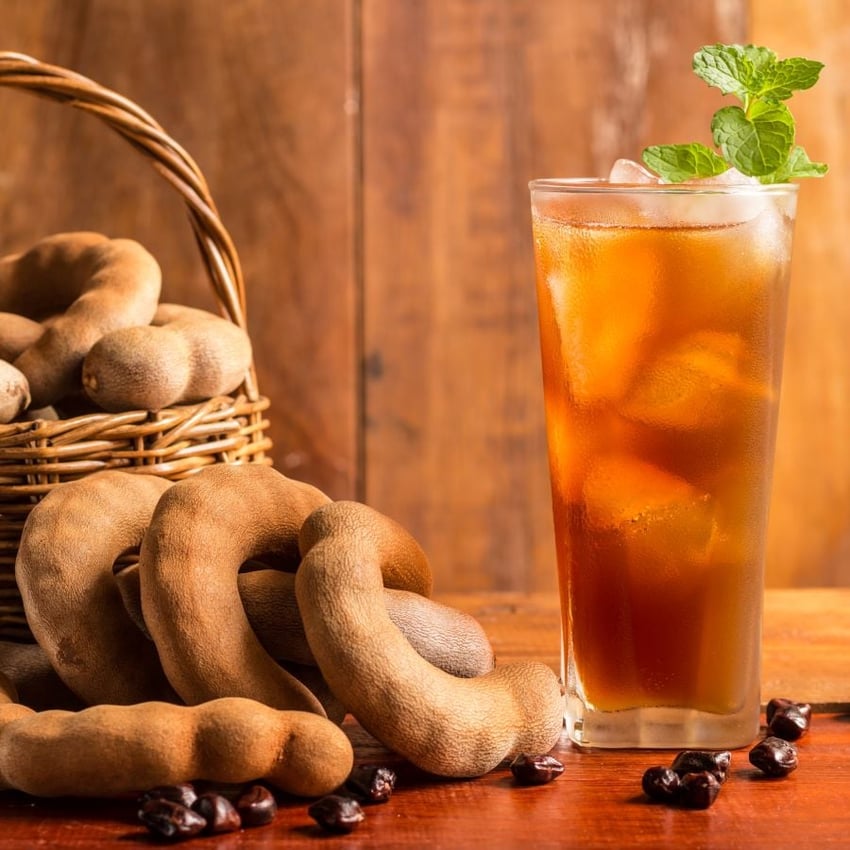

Tamarind
450 gDelivery to your door
We source locally for the freshest groceries you can trust.
- Description
- Composition
- Similar products
- More from this brand
- Recipes

Eistee zum Selbermachen
Among spices, tamarind is one of the great unknowns. Most people only know it as a typical ingredient in Worcester sauce. It is different in Asia and Africa. There, the tamarind tree, which grows up to 30 metres high, has been valued for many centuries and almost everything from it is used: furniture is made from the hard wood, the blossoms and leaves are eaten as a vegetable or in salads, and the pods of its fruits are used as cattle feed.
Despite the name, however, the bark of the tree, of all things, is hardly of interest and is not the origin of the spice's name. In fact, the word tamarind comes from Arabic. Translated, it means something like "Indian date" and reveals what it is actually about: the brown pods are coveted, with up to twelve seeds inside. They are covered in date-like pulp, from which the actual tamarind is obtained.
As a paste, pith, extract or dried, as well as fresh in the countries of origin, tamarind is used as a spice in chutneys, jams, soft drinks (e.g. lemonade) and seasoning sauces. In Indian, Indonesian and Chinese cuisine, it is used to make a kind of vinegar substitute, which tastes much milder than conventional vinegar and gives many Asian dishes their typical taste.
Season
Fresh tamarind is rare in our country, but you can get tamarind products at any time of the year.
Origin
Originally native to Africa, tamarind also reached India early on. There, the tamarind tree is considered sacred: its bark is said to make elephants wise. In Africa and Burma, too, legends surround the trees, which are often 200 years old. Some African tribes also worship it as sacred, and the Burmese even believe that the rain god resides in its crown, which can be up to twelve metres wide.
Taste
Tamarind tastes mildly sweet and sour, pleasantly fruity and slightly tart.
